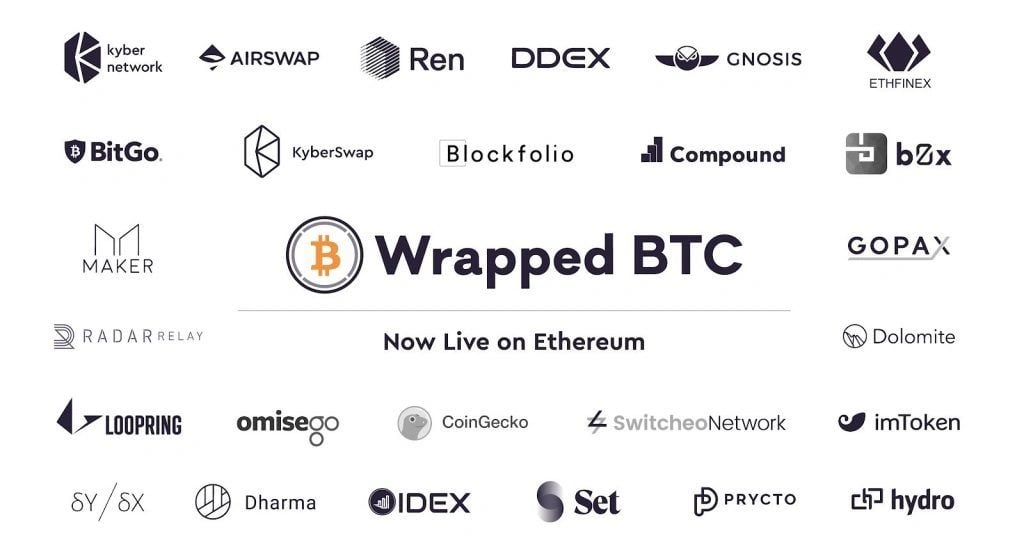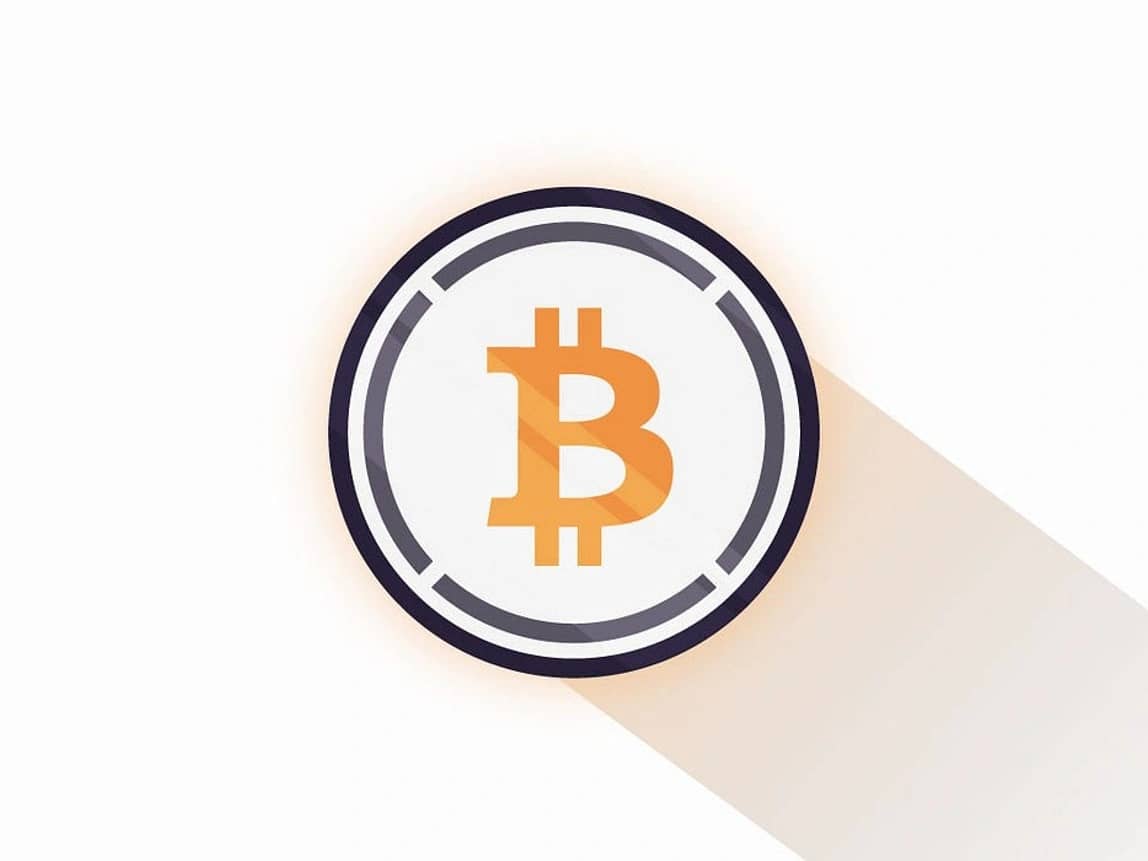위키 구독하기
Share wiki
Bookmark
Wrapped Bitcoin (WBTC)
Wrapped Bitcoin (WBTC)
**래핑드 비트코인(WBTC)**은 이더리움 기반 토큰(ERC-20)으로 비트코인과 1:1로 담보되어 BTC 보유자가 이더리움의 탈중앙화 금융(DeFi) 생태계에 참여할 수 있도록 합니다.
이는 탈중앙화 암호화폐와 전통 금융 간의 간극을 메우는 디지털 자산입니다. WBTC는 비트코인과 동일한 경제적 특성을 가지고 있어 사용자에게 자산 가치 저장, 투자 기회 및 유동성을 제공합니다. WBTC 출시를 통해 사용자는 비트코인과 이더리움 네트워크 모두의 이점을 누릴 수 있습니다. [1][2][3]
역사
WBTC가 속한 Wrapped Tokens 프로젝트는 BitGo(빗고), Kyber Network(카이버 네트워크), 그리고 Ren(렌)(이전에는 Republic Protocol) 세 기관이 설립했습니다. [4][5][6]
2018년 10월 26일에 출시된 이 프로젝트의 목표는 Ethereum(이더리움)에서 Bitcoin(비트코인)의 새로운 애플리케이션 사용 사례를 가능하게 하는 ERC-20 토큰을 구축하는 것입니다. WBTC는 ERC-20 표준에 따라 비트코인을 표준화하려는 시도로, 이더리움 smart contract(스마트 컨트랙트) 개발자, decentralized exchange(탈중앙화 거래소) 주문 및 Ethereum(이더리움) 생태계의 다른 부분에서 1:1 페깅 코인으로서 Bitcoin(비트코인)의 유동성에 직접 노출될 수 있도록 합니다. [8][10]
2013년 Mike Belshe가 공동 설립한 BitGo(빗고)는 기관급 디지털 자산 보관, 거래 및 금융 서비스 회사입니다. WBTC 개발사 중 하나이며, 토큰을 발행하는 데 필요한 토큰과 키의 원래 보관자입니다. [7][4]
Kyber Network(카이버 네트워크)는 암호화폐 토큰과 DeFi 애플리케이션의 통합을 용이하게 하도록 설계된 온체인 유동성 프로토콜입니다. 2017년 Loi Luu, Victor Tran, Yaron Velner가 설립한 카이버 네트워크는 싱가포르에 본사를 두고 있으며 Ren의 파트너입니다. 카이버 네트워크는 WBTC 네트워크의 상인으로도 활동하며, 토큰과 BTC(비트코인) 준비금의 1:1 비율을 유지하기 위해 WBTC 토큰을 발행하고 소각합니다. [6][4]
Ren(렌)은 2017년 Taiyang Zhang과 Loong Wang이 설립한 회사로, RenBridge 및 RenVM과 같은 솔루션을 통해 암호화폐 자산과 DeFi applications(DeFi 애플리케이션)의 크로스체인 통합에 중점을 둡니다. [4][9]
2019년 1월, 초기 WBTC 백서가 발표되었고, AirSwap(에어스왑), Dharma, ETHfinex, GOPAX, Kyber Network(카이버 네트워크), Prycto, Ren(렌), Set Protocol 등 8개의 상인이 Bitcoin(비트코인)에서 WBTC로의 전환을 지원하며 토큰이 출시되었습니다.
출시 직후, cryptocurrency(암호화폐) 분야의 많은 다른 저명한 기관들이 토큰 보유, 거버넌스 위원회 참여 또는 토큰 인지도 제고를 통해 WBTC 채택을 지원하는 런칭 파트너가 되어 커뮤니티 노력에 참여하기 시작했습니다. 파트너십에 참여한 기관으로는 Gnosis(그노시스), MakerDAO(메이커다오), Dharma, AirSwap(에어스왑), IDEX(아이덱스), Compound(컴파운드), DDEX(디덱스), Hydro Protocol, Set Protocol, Radar Relay(레이더 릴레이), Blockfolio, Prycto 등이 있습니다. [5]

초기 시가총액 증가
2020년 8월 초, Wrapped Bitcoin (WBTC)는 시가총액(market capitalization)이 2억 3천만 달러를 넘어서면서 가치가 급증했습니다. 이러한 엄청난 성장의 일부는 탈중앙화 금융(DeFi) 분야에 대한 관심이 증가하면서 투자 수익률이 계속 상승했기 때문입니다. [12][13]
신기록 경신 민팅
2020년 10월 14일, CoinList는 단일일에 4,997 WBTC(당시 가치 5,710만 달러)를 민팅하여 래핑 비트코인 최대 민팅량 신기록을 세웠습니다. 이는 Alameda Research가 세운 이전 기록인 4,093 WBTC(당시 가치 4,470만 달러)를 넘어선 것입니다. [14][15]
기술
발행
발행은 새로운 래핑 토큰을 생성하는 과정입니다. 이 과정은 상인이 Ethereum에서 보관자에게 새로운 토큰을 생성하도록 승인하는 트랜잭션을 통해 시작됩니다. 그런 다음 상인은 보관자에게 네이티브 Bitcoin을 보내고, 보관자는 가장 안전한 Bitcoin의 6블록 확인을 기다립니다. 트랜잭션이 완료되면 보관자는 Ethereum 네트워크에서 새로운 트랜잭션을 생성하여 1:1 비율의 새로운 WBTC 발행을 가능하게 합니다. [16][5]
소각
소각은 WBTC 토큰을 사용하여 BTC를 획득하는 것을 의미합니다. 이는 WBTC 스마트 계약을 사용하여 "소각" 트랜잭션을 생성하는 검증된 상인을 통해 이루어집니다. Ethereum 체인에서 25개 블록 확인이 완료되면, 지정된 양의 WBTC가 상인의 잔액에서 차감되고, 보관자는 BTC를 상인의 주소로 다시 보냅니다.
사용자와 상인은 '원자 스왑'(atomic swap)을 수행하거나 신뢰할 수 있는 거래소를 통해 작업하기 전에 KYC 및 AML 절차를 완료해야 합니다. 사용자는 BTC를 받고 상인은 WBTC 토큰을 받습니다. [5][16]
WBTC 생태계
보관기관
보관기관은 암호자산을 보관하는 기관입니다. WBTC의 경우, BitGo(빗고)가 비트코인 보관을 담당합니다.
머천트(Merchant)
래핑된 토큰이 생성되고 소각되는 기관 또는 당사자입니다. 머천트는 래핑된 토큰의 유통에 중요한 역할을 합니다. WBTC의 경우, 초기에는 Kyber(카이버)와 Ren(렌)이 이 역할을 수행합니다. 각 머천트는 새로운 래핑된 토큰의 생성과 래핑된 토큰의 소각을 시작하기 위한 키를 보유합니다.
사용자
사용자는 WBTC 보유자입니다. 사용자는 이더리움 생태계의 다른 ERC20 토큰처럼 WBTC를 이체하고 거래할 수 있습니다.
WBTC DAO 회원
WBTC DAO는 계약 변경 및 보관자 및 상인 추가/제거를 담당하는 관리 기구입니다. 이 거버넌스 기구는 변경을 시작하기 전에 모든 회원의 합의가 필요한 다중 서명 계약을 통해 네트워크의 분산화를 지원합니다. [5][17]
거버넌스
래핑된 토큰 계약은 DAO 회원의 서명이 필요한 다중 서명 계약에 의해 관리됩니다. 회원을 추가하거나 제거하려면 DAO 회원의 서명이 필요합니다. 모든 수탁자와 상인은 DAO 회원이지만, 다른 기관도 수탁자 또는 상인 역할 없이 회원 자격을 얻을 수 있습니다. 계약에는 "M of N" 서명이 사용되며, 여기서 M은 필요한 서명 수이고 N은 총 회원 수입니다. M과 N의 값은 보안과 회원 추가 및 제거의 용이성 모두에 중점을 두고 회원 간에 상호 결정됩니다. [5]
유틸리티
WBTC는 이더리움 생태계(ecosystem)의 유동성(liquidity), 특히 DEX(탈중앙화 거래소) 및 금융 애플리케이션을 증가시키는 데 사용될 수 있습니다. 이는 DEX(탈중앙화 거래소)에서 비트코인 유동성을 용이하게 하여 비트코인을 토큰 거래에 사용할 수 있도록 합니다. WBTC는 또한 비트코인을 ERC-20 형식으로 표준화하여 스마트 계약을 비트코인에 사용할 수 있도록 합니다. 이는 비트코인 이체를 포함하는 스마트 계약 개발을 용이하게 합니다. [1]
ERC-20 블록체인 기술 기반의 Wrapped Bitcoin을 사용하면 거래소, 지갑 및 암호화폐 기반 결제 앱에서 이더리움 노드만 처리하면 되므로 탈중앙화 금융(DeFi) 생태계에서 발생하는 거래 관리가 더욱 쉬워집니다. [18]
WBTC DAO 마이그레이션
2022년 11월 20일, Kyber Network(카이버 네트워크)의 CEO인 Victor Tran은 WBTC의 GitHub [20]에 WBTC DAO를 새로운 다중 서명 계약으로 마이그레이션하는 풀 리퀘스트를 제출했습니다. [19] Victor의 설명에 따르면, BitGo와 Kyber(카이버 네트워크)가 조율한 이 마이그레이션을 통해 새로운 멀티시그 서명자는 기존 18명에서 13명으로 줄어들었습니다.
FTX(에프티엑스), MakerDAO(메이커다오), Airswap(에어스왑) 등 기존 서명자 11명이 제거되고, 자동화된 시장 조성자 Balancer(밸런서)[22], 분산형 오라클 프로토콜 Chainlink(체인링크)[23], 멀티체인 플랫폼 Krystal[24], RiskDAO[25], Badger(배저)[26], Multichain[27] 등 6명의 새로운 멤버가 추가되었습니다. 새로운 멀티시그 목록에는 DeFi 대출 플랫폼 Compound(컴파운드), 2계층 거래소 Loopring(루프링), Kyber(카이버 네트워크), BitGo 등 기존 멤버 7명이 포함되어 있습니다. [21]
초기 서명자 중 다수가 비활동 상태가 되거나 키에 대한 접근 권한을 상실함에 따라 마이그레이션이 필요하게 되었습니다. 이로 인해 계약을 책임감 있게 관리하는 멀티시그의 가용성이 감소했습니다. 마이그레이션 완료 후, WBTC DAO는 13명의 서명자 중 8명의 찬성으로 합의를 형성하고 거래를 처리하게 됩니다.
이 변경 전, 약 4년 전에 생성된 이전 멀티시그는 모든 문제에 대해 18명의 서명자 중 11명의 찬성이 필요했습니다. [21][29]
2022년 12월 13일, WBTC는 새로운 DAO로 전환을 시작하기 위해 필요한 11개의 서명을 완료했습니다. 발표 내용은 다음과 같습니다.
"WBTC DAO는 중요한 이정표를 달성했습니다 – 새로운 DAO로의 전환을 시작하기 위해 기존 멤버들로부터 11개의 서명을 받았습니다. 참여해주신 모든 분들께 감사드립니다."
다중 서명 및 수탁 시스템이 완전한 탈중앙화를 보장하는 방법
2025년 5월, WBTC는 다중 서명 및 수탁 시스템이 완전한 탈중앙화를 보장하는 방법에 대한 기사를 발표했습니다. 다른 많은 래핑 토큰과 달리 WBTC는 자체 준비금을 보호하기 위해 단일 기관이나 관할권에 의존하지 않는다고 명시하고 있습니다.
대신 WBTC는 서명 권한이 여러 관할권에 분산되는 다기능 삼자 키 보관 모델을 사용합니다. 즉:
- WBTC를 뒷받침하는 비트코인은 인터넷에 접속할 수 없는 콜드 월렛에 저장되어 해킹 위험을 줄입니다.
- 키는 지리적으로 분산되고 다계층으로 구성되어 탄력적이고 다관할권 보안을 보장합니다.
- 개인 키는 여러 국가에 저장되어 WBTC의 보안을 더욱 강화합니다.
이 시스템은 하나의 목표를 위해 설계되었습니다. 항상 자금의 안전과 검증 가능성을 유지하는 것입니다. 여러 기관과 관할권에 개인 키를 저장함으로써 집중 위험을 방지합니다. 이는 사용자에게 장기적인 신뢰를 제공하여 현재 보유하고 있는 토큰이 계속해서 완전히 뒷받침되고 안전하게 유지될 것임을 의미합니다. 이러한 수준의 투명성은 드뭅니다. 그리고 이것이 WBTC가 출시 첫날부터 주요 DeFi 프로토콜의 신뢰를 얻은 주요 이유 중 하나입니다. [30]
잘못된 내용이 있나요?
